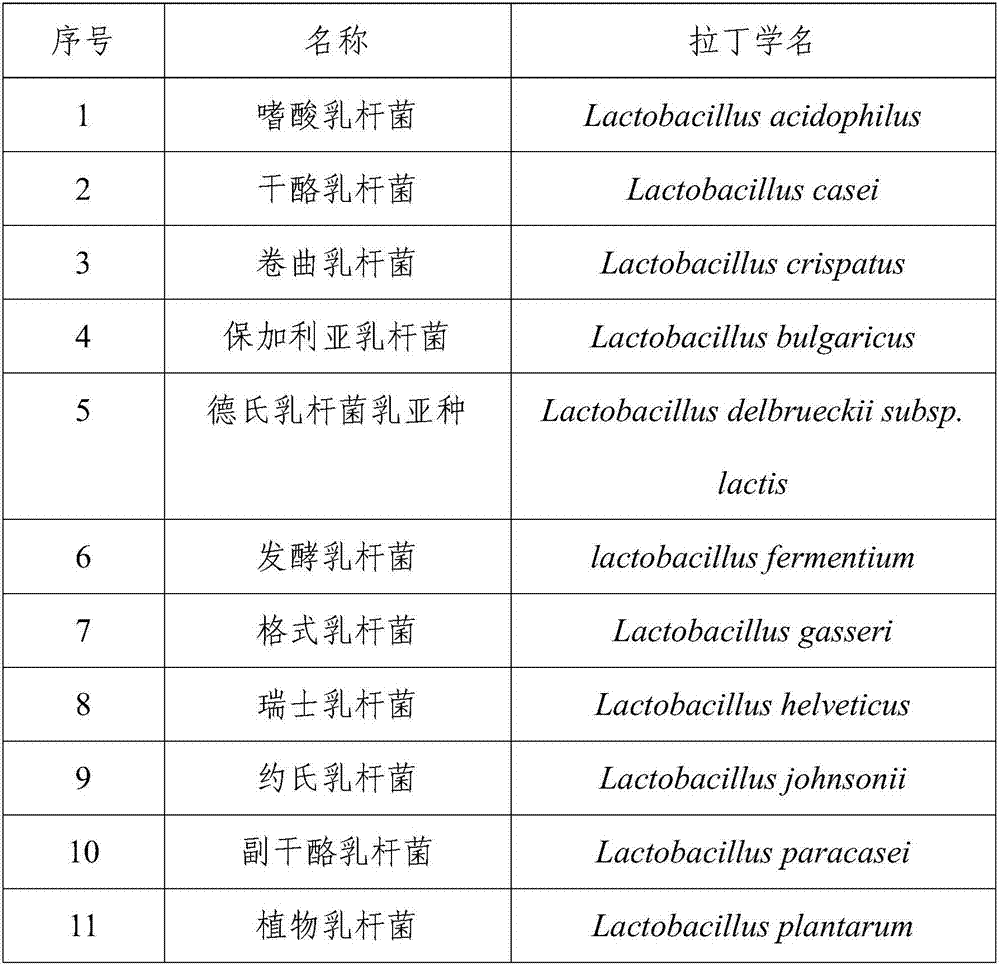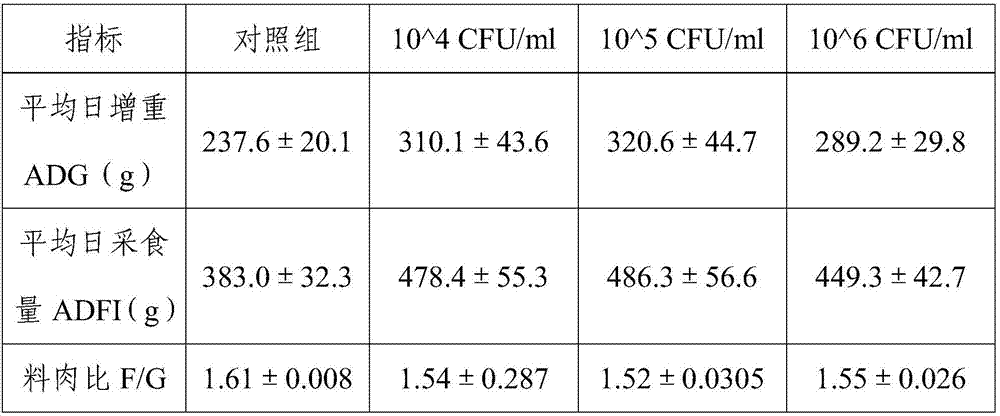Pig origin saliva lactobacillus viable bacteria preparation and application
A technology of Lactobacillus salivarius and viable bacteria preparations, applied in the application, bacteria, microorganisms and other directions, to achieve the effect of reducing the use of antibiotics, low production cost, and reducing the cost of raising pigs
- Summary
- Abstract
- Description
- Claims
- Application Information
AI Technical Summary
Problems solved by technology
Method used
Image
Examples
Embodiment 1
[0031] Isolation and identification of strains:
[0032] Take pig rectal feces by aseptic method, accurately weigh 1 g of fresh pig feces, place in 9 mL of normal saline, shake for 15 minutes to mix, and perform 10-fold gradient dilution. Take 100 μL of sample for each dilution and add it to RCM semi-solid medium, and cultivate for 48 hours. After the colonies grow in the medium, select as many strains with different colony forms as possible for purification, and perform microscopic examination on the purified strains to confirm their cells. Morphology and its biological properties were measured.
[0033] Inoculate the purified strain in a liquid test tube, extract its genomic DNA, and use the genomic DNA as a template to perform 16S amplification by PCR. 16S rDNA amplification uses bacterial universal primers 27F: 5′-AGAGTTTGATCMTGGCTCAG-3′ and 1492R: 5′-CGGYTACCTTGTTACGACTT -3' (primers were synthesized by Shanghai Yingwei Jieji Trading Co., Ltd.), the length of the amplifi...
Embodiment 2
[0038] Strain optimization experiment:
[0039] (2.1) Effect of pH on Lactobacillus salivarius ZFB12
[0040] ZFB12 was cultured in the MRS medium to the late logarithmic phase, and the bacterial solution was taken in physiological saline with a pH value of 2.0, 3.0, 4.0, 5.0, and 6.0, and the number of viable bacteria was measured every 30 minutes. The survival rate had no significant impact. When the pH was lowered to 1.0, the number of bacteria decreased. Therefore, ZFB12 could tolerate the acidic environment with a pH value of 2.0. When the pH was further lowered, the strain's tolerance to it decreased.
[0041] (2.2) Heat resistance of Lactobacillus salivarius ZFB12
[0042] ZFB12 was cultured in the MRS medium to the late logarithmic phase, and the bacteria were inoculated into physiological saline that had been preheated to 50°C, 70°C, and 90°C, and the number of viable bacteria was measured every 1 minute. The results showed that ZFB12 was The survival rate after treat...
Embodiment 3
[0049] Practical application experiment:
[0050] (3.1) Animal experiment of Lactobacillus salivarius ZFB12 drink
[0051] Select 30-day-old piglets for the experiment, divide them into four groups, each group has three repetitions, and each repetition has 6 piglets to ensure that the weight and physical condition of the piglets are basically the same, and the water without fermentation broth is used as a control. The liquid was added to the feeding water, and the final concentration of lactic acid bacteria reached 104, 105 and 106 CFU / ml respectively, and the water was cut off for 2 hours before feeding, and the feeding continued for half a month.
[0052] (3.2) Application dose experiment of Lactobacillus salivarius ZFB12 drink
[0053] After half a month of experiments, it was found that compared with the control group, the diarrhea rate of piglets in the experimental group added with lactic acid bacteria decreased. Compared with the three experimental groups, when the fin...
PUM
 Login to View More
Login to View More Abstract
Description
Claims
Application Information
 Login to View More
Login to View More - R&D
- Intellectual Property
- Life Sciences
- Materials
- Tech Scout
- Unparalleled Data Quality
- Higher Quality Content
- 60% Fewer Hallucinations
Browse by: Latest US Patents, China's latest patents, Technical Efficacy Thesaurus, Application Domain, Technology Topic, Popular Technical Reports.
© 2025 PatSnap. All rights reserved.Legal|Privacy policy|Modern Slavery Act Transparency Statement|Sitemap|About US| Contact US: help@patsnap.com



